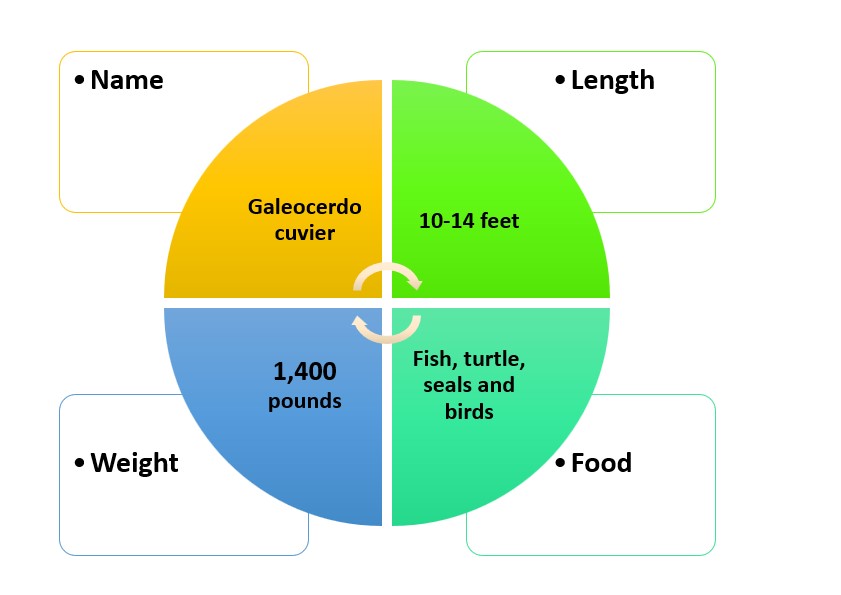
Are Tiger Sharks in Oahu? It’s a hot topic! Many are curious if these powerful predators could be lurking in the beautiful waters.
The truth is, tiger sharks can be found around Oahu, Hawaii. With their stripes and size, they make quite an impression. But, there’s no need to worry. Encounters with humans are rare. They prefer deeper offshore waters, but may come closer for food. Shark attacks are not common.
To stay safe in Oahu’s waters, here’s what you can do:
- Swim or Surf in groups.
- Avoid swimming at dawn or dusk, when visibility is low.
- Heed lifeguard warnings about shark sightings.
Last but not least, remember to respect the ocean and its inhabitants. By understanding and appreciating sharks, we can coexist peacefully.
Key Takeaways
- Tiger sharks are commonly found in the waters surrounding Oahu.
- Oahu has a high concentration of tiger sharks due to its diverse marine ecosystem and abundant food sources.
- The presence of tiger sharks in Oahu’s waters is a natural occurrence and not necessarily a cause for concern.
- While tiger sharks are known to be apex predators, they generally do not pose a significant threat to humans unless provoked or mistaken for prey.
- It is important for beachgoers and water enthusiasts to be aware of their surroundings and follow safety guidelines to minimize the risk of encountering a tiger shark.
- Oahu’s local authorities and marine conservation organizations are actively monitoring tiger shark populations and implementing measures to ensure the safety of both humans and sharks.
- Education and awareness programs are being conducted to educate the public about tiger sharks and promote coexistence with these important marine creatures.
Background information on Tiger Sharks

Tiger Sharks, also known as Galeocerdo cuvier, have earned their name from their dark, tiger-like stripes. On average, they measure 10-14 feet in length and weigh up to 1,400 pounds – an impressive size!
These predators have a notorious appetite, and anything is fair game – from fish and turtles to seals and even birds. That’s why they are often called the “Garbage Can of the Sea” – they can eat anything! Their adaptability allows them to thrive in many different marine environments.
What’s more, Tiger Sharks can migrate vast distances across various habitats throughout their lives. They’ve been seen swimming across entire oceans!
If you’re lucky enough to spot these majestic creatures while on Oahu, admire them from a safe distance. Respect their wild nature – both your safety and theirs is important.
Presence of Tiger Sharks in Oahu
Tiger Sharks be swimming in Oahu! Let’s break down the facts. It’s estimated that 150 of these predators call the North Shore, Maunalua Bay, and Waikiki home. But these locations are no limits for the tiger sharks who have also been spotted near surf spots and fishing grounds.
Safety first, though! While shark attacks on humans are rare, it’s best to avoid swimming alone during dawn and dusk when the tiger sharks are most active.
If you want to spot from a safe distance, join a guided shark watchin’ tour. That way you can witness these majestic creatures in their natural habitat without worrying about your safety.
Impact of Tiger Sharks on Oahu’s ecosystem
Tiger Sharks have a great impact on Oahu’s ecosystem. Let’s take a look at how!
Firstly, they regulate other fish species, keeping a balanced population. And, they also affect the behavior of other marine creatures.
In addition, Tiger Sharks help maintain healthy coral reefs around Oahu. This is important for various marine organisms.
Therefore, conservation efforts are essential. Education programs can raise awareness among locals and visitors. Also, establishing protected areas will help with conservation and research. By understanding their movements, we can adjust our management strategies.
Conservation efforts and initiatives to manage Tiger Shark populations in Oahu

Satellite tagging technology is used to track Tiger Sharks in real-time. This data reveals their feeding and breeding areas, helping authorities impose restrictions. Plus, public awareness campaigns inform people about proper behavior around these creatures.
To protect them, marine reserves limit or ban fishing activities. These sanctuaries allow their populations to grow undisturbed. Also, researchers can study them better.
Drones with cameras conduct aerial surveys to gain insights into population numbers and habitat use. This helps design conservation strategies. Scientists can evaluate the success of these efforts and adjust them if needed.
If you meet a Tiger Shark in Oahu’s waters, stay calm. Keep eye contact and move slowly towards shallower water or a boat. Contact lifeguards or authorities for help.
Surfing in Oahu may be risky, but at least it’s never boring!
Safety measures for beachgoers and surfers in Oahu
Beachgoers and surfers in Oahu should follow certain safety tips for a secure and enjoyable experience. Here are five key points:
- Stay up-to-date on ocean conditions. Check for warnings or advisories issued by local authorities.
- No solo swimming or surfing, especially in remote areas. Have a buddy with you for emergencies.
- Watch your surroundings. Scan the water for signs of marine life. If you see a tiger shark, calmly leave the water.
- Know local regulations and guidelines. Some beaches have specific rules, so familiarize yourself before going.
- Invest in safety gear like shark repellent devices or personal flotation devices.
Tiger sharks sometimes visit Oahu. These sharks have large size and powerful jaws, but incidents are rare.
Stay calm if you come across one. Keep a respectful distance and don’t make sudden movements. Following safety measures reduces risk of harm.
Pro Tip: Respect the ocean and its inhabitants for your safety. Stay aware and prepared!
Frequently Asked Questions
Q: Are Tiger Sharks commonly found in Oahu?
A: Yes, Tiger Sharks are frequently seen in the waters surrounding Oahu.
Q: Are Tiger Sharks dangerous to humans?
A: While Tiger Sharks are known to be potentially dangerous, shark attacks on humans are rare in Oahu.
Q: Can you swim with Tiger Sharks in Oahu?
A: There are companies that offer guided tours where you can safely swim with Tiger Sharks in Oahu.
Q: What precautions should I take if I encounter a Tiger Shark in Oahu?
A: If you come across a Tiger Shark while swimming or diving in Oahu, it is recommended to remain calm, avoid sudden movements, and slowly back away from the shark without turning your back on it.
Q: Are there specific areas in Oahu where Tiger Sharks are more likely to be found?
A: Tiger Sharks are known to inhabit both shallow and deep waters around Oahu, but they are more commonly seen near offshore reefs and drop-offs.
Q: Are there any beach closures in Oahu due to Tiger Shark sightings?
A: Occasionally, beach closures may occur in Oahu if there is a high presence of Tiger Sharks in the area. It is always advised to check with local authorities or lifeguards for any potential beach closures before swimming.
Conclusion
Tiger sharks can be found in the waters around Oahu. They can reach up to 18 feet in length! They have a powerful sense of smell, allowing them to spot prey from miles away. This makes them an essential part of the marine food chain.
These sharks mainly eat fish, seals, and sea turtles. But, there have been rare cases of their attacks on humans. So it is important to take precautions when entering their territory.
If you’re visiting Oahu’s beaches, you must stay informed about shark sightings. Local authorities regularly provide updates. Swimming in groups, avoiding murky water and schools of fish, and heeding warning signs can help reduce the risk of encounters with these predators.




